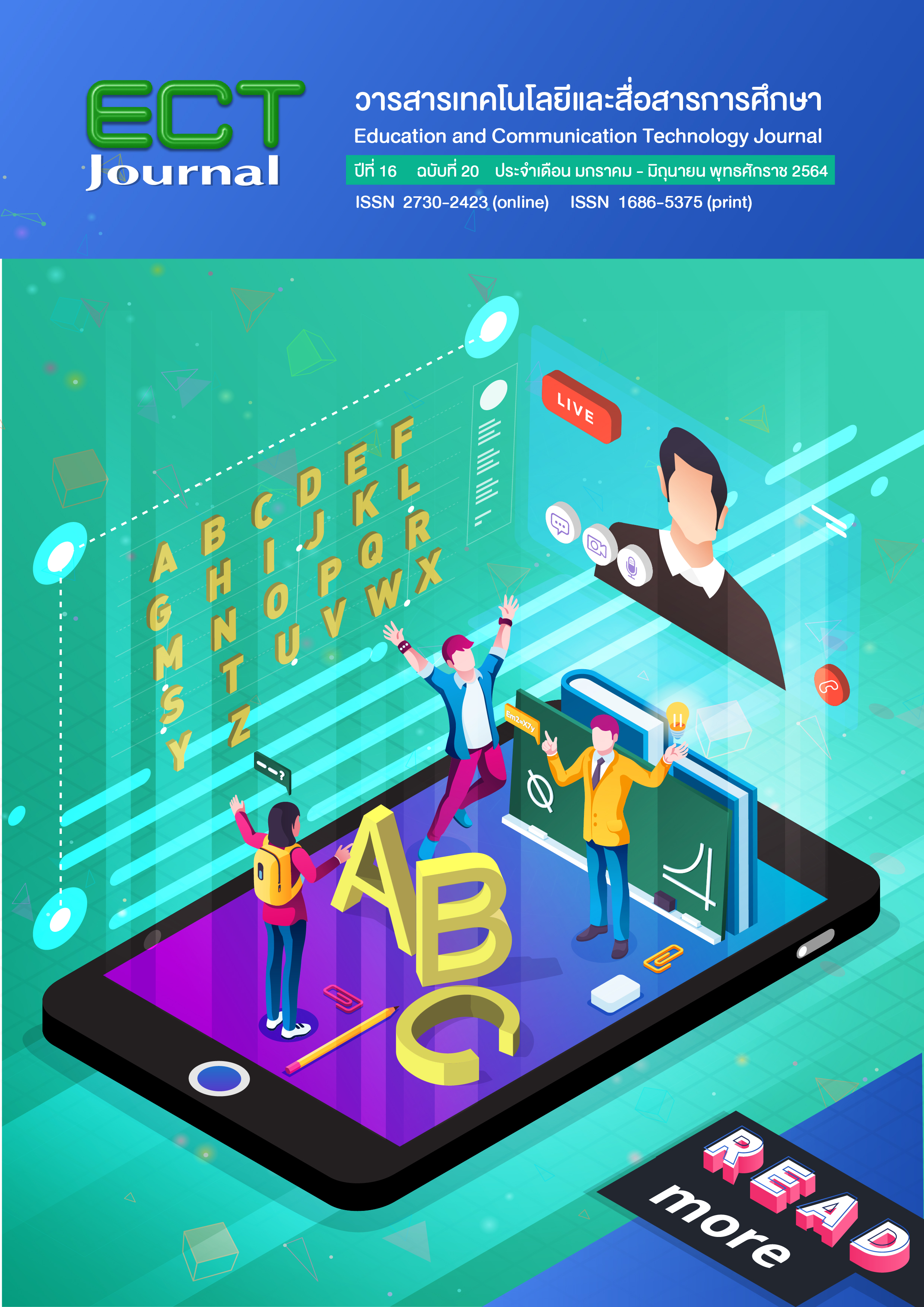Social Media for Education
Keywords:
Social Media, EducationAbstract
Social media for Education is an intermediary which transmits the content, experience, and learning process for behavioral change. Through media gathering a group of people on the internet. Instructors and learners can create, share, exchange knowledge, content, and experience in forms of audio, text, images, animation, etc. via the media of the website on the Internet. Moreover, social media for education is useful for instructors to teach their learners. It is a learning resource. The user can use social media to communicate, collaborate and help to do brainstorming and working together. However, the social media instructional design model consists of learner analysis, content analysis, set objective, media design, learning activities, and evaluation. However, social media should be used with discretion, media literacy, ethics, and safety.
References
กานดา รุณนะพงศา สายแก้ว, ธรา อั่งสกุล, และศุภกฤษฏิ์ นิวัฒนากูล. (2557). การใช้เฟซบุ๊ก กูเกิลดอกส์ มูเดิล เพื่อการเรียนการสอน. มหาวิทยาลัยเทคโนโลยีสุรนารี. https://www.researchgate.net/scientific-contributions/Kanda-Runapongsa-Saikaew-37097273
นฤมล บุญส่ง. (2561). สื่อสังคมกับการเรียนการสอนในศตวรรษที่ 21. วารสารวิชาการ Veridian E-Journal มหาวิทยาลัยศิลปากร, 11(1), 2873-2885. https://he02.tci-thaijo.org/index.php/Veridian-E-Journal/article/view/145596
ยืน ภู่วรวรรณ. (2554). นวัตกรรมทางการศึกษาเพื่อการจัดการเรียนรู้. ใน เอกสารการสอนชุดวิชาการพัฒนาระบบการจัดการเรียนรู้ (หน่วยที่ 11, น. 1-55). สาขาวิชาศึกษาศาสตร์ มหาวิทยาลัยสุโขทัยธรรมาธิราช. https://www.stou.ac.th/thai/Schools/Shs/booklet/index.asp
ระวิ แก้วสุกใส และชัยรัตน์ จุสปาโล. (2556). เครือข่ายสังคมออนไลน์: กรณีเฟสบุ๊ก (Facebook) กับการพัฒนาผู้เรียน. วารสารมหาวิทยาลัยนราธิวาสราชนครินทร์, 5(4), 195-205. https://www.tci-thaijo.org/index.php/princess_it_journal/article/view/20234
วรางคณา โตโพธิ์ไทย. (2560). สื่อสังคมเพื่อการศึกษา. ใน เอกสารการสอนชุดวิชาเทคโนโลยีและสื่อสารการศึกษา (หน่วยที่ 13, น. 13-1–13-43). สาขาวิชาศึกษาศาสตร์ มหาวิทยาลัยสุโขทัยธรรมาธิราช. https://www.stou.ac.th/schoolsite/sec/UploadedFile/27711-1.pdf
Collin, P., Rahilly, K., Richardson, I., & Third, A. (2011). The benefits of social networking services. Cooperative Research Centre for Young People, Technology and Wellbeing. https://www.researchgate.net/publication/271444721_The_Benefits_of_Social_Networking_Services
Oberlo. (2020, 17 January). 10 social media statistics you need to know in 2020. https://www.oberlo.com/blog/social-media-marketing-statistics
Williamson, A. (2019). Social media guidelines for parliaments. Inter-Parliamentary Union. https://www.ipu.org/resources/publications/reference/2016-07/social-media-guidelines-parliaments
Downloads
Published
How to Cite
Issue
Section
License
Copyright (c) 2021 มหาวิทยาลัยสุโขทัยธรรมาธิราช

This work is licensed under a Creative Commons Attribution-NonCommercial-NoDerivatives 4.0 International License.
1. ทรรศนะและข้อคิดเห็นใด ๆ ที่ปรากฏอยู่ในวารสาร ECT Education and Communication Technology Journal เป็นของผู้เขียนโดยเฉพาะ สำนักเทคโนโลยีการศึกษา มหาวิทยาลัยสุโขทัยธรรมาธิราช และกองบรรณาธิการไม่จำเป็นต้องเห็นพ้องด้วย
2. กองบรรณาธิการของสงวนลิขสิทธิ์ในการบรรณาธิการข้อเขียนทุกชิ้น เพื่อความเหมาะสมในการจัดพิมพ์เผยแพร่






